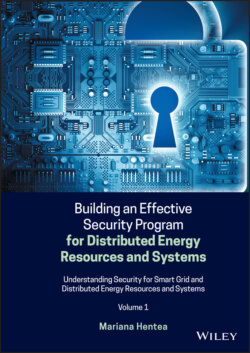Читать книгу Building an Effective Security Program for Distributed Energy Resources and Systems - Mariana Hentea - Страница 62
2.1.1 Internet of Things
ОглавлениеIn simple terms, the IoT refers to the networked interconnection of everyday objects. The IoT is a general evolution of the Internet from a network of interconnected computers to a network of interconnected objects [IntSoc 2015a].
Since the term IoT was first coined by the Auto‐ID center in 1999 [AUTO‐ID 1999], the development of the underlying concepts has ever increased its pace [Santucci 2010]. Nowadays, the IoT presents a strong focus of research with various initiatives working on the (re)design, application, and usage of standard Internet technologies in the IoT technology.
Despite being a buzzword, IoT technology denotes a trend where a large number of embedded devices employ communication services offered by communication protocols. The embedded electronics, software, sensors, and network connectivity enable the objects to collect and exchange data. Many of these devices, often called smart objects, are not directly operated by humans but exist as components spread out in the environment [RFC 7452]. Such devices have been used in the industry for decades, usually in the form of non‐ Internet Protocol (IP)/proprietary protocols that are connected to IP‐based networks by way of protocol translation gateways.
The IoT is defined as a global infrastructure for the information society, enabling advanced services by interconnecting (physical and virtual) things based on existing and evolving interoperable information and communication technologies [ITU‐T 2012]. The IoT refers broadly to the extension of network connectivity and computing capability to objects, devices, sensors, and items not ordinarily considered to be computers [IntSoc 2015a]. The IoT technology assumes the interconnection of highly heterogeneous networked entities and networks following a number of communication patterns such as human to human (H2H), human to thing (H2T), thing to thing (T2T), or thing to things (T2Ts).
With many definitions, but similar concepts, there is no single, universally accepted definition for the term. Different definitions are used by various groups to describe or promote a particular view of what IoT means and its most important attributes. Some definitions specify the concept of the Internet, while others do not [IntSoc 2015a], and others define the connection of things on a multipoint basis [ABI Research 2015a]. The various definitions of IoT emphasize different aspects of the IoT phenomenon from different focal points and use cases, but there are concerns such as the following:
The disparate definitions could be a source of confusion in dialogue on IoT issues, particularly in discussions between stakeholder groups or industry segments.
Different perspectives that could be factored into discussions create a vulnerable technology that may not be able to deal with several threats (e.g. economic, cyber, natural, etc.).
Some fuzziness still exists in these definitions, but one argues that every physical object has a virtual component that can produce and consume services and collaborate toward a common goal [Roman 2011]. Things have identities and virtual personalities operating in smart spaces using intelligent interfaces to connect and communicate within social, environmental, and user contexts [EC‐EPoSS 2008]. These characteristics enable IoT to extend anywhere, anyhow, anytime computing to anything, anyone, any service [EC‐EPoSS 2008], [Roman 2011]. In the IoT paradigm, everything real becomes virtual, which means that each person and thing has a locatable, addressable, and readable counterpart on the Internet.
